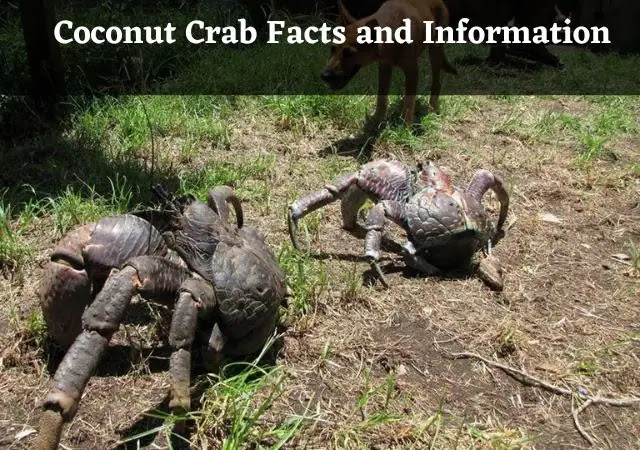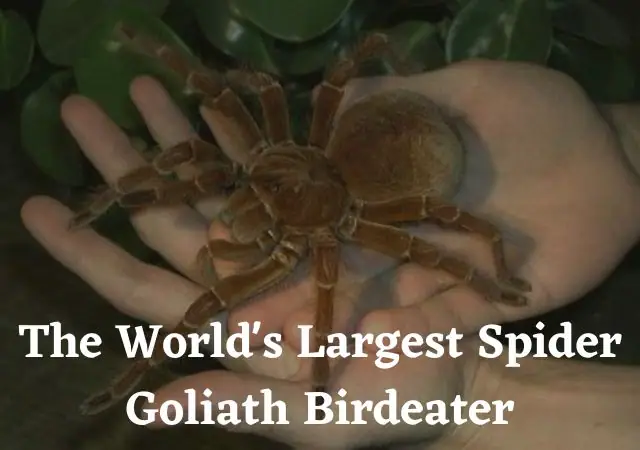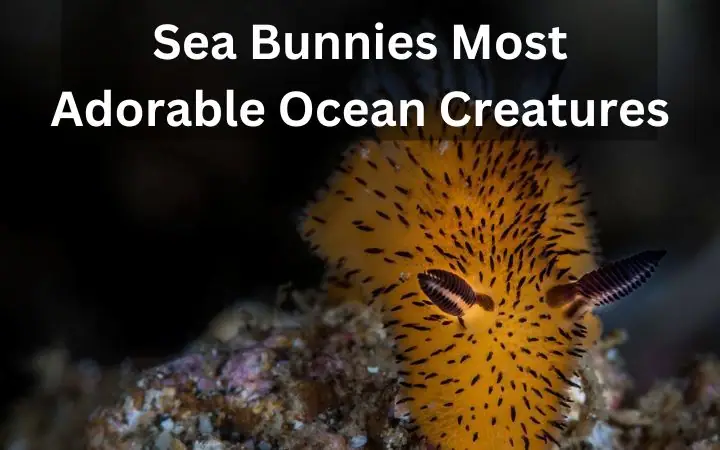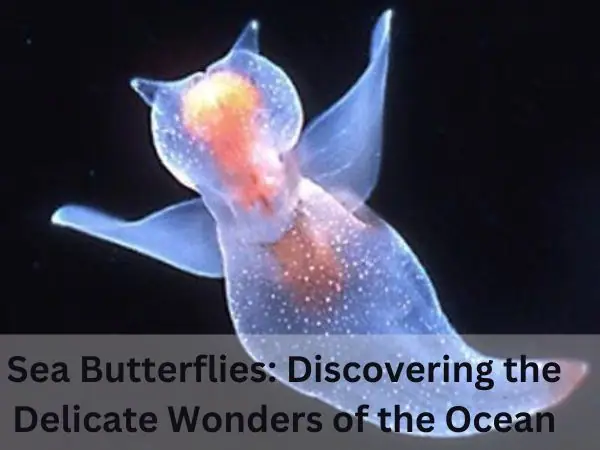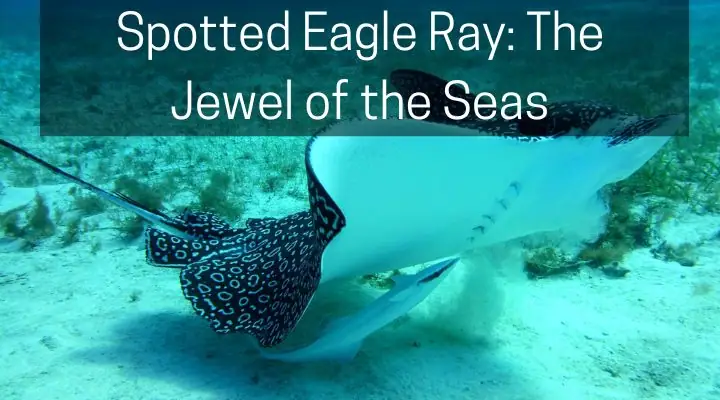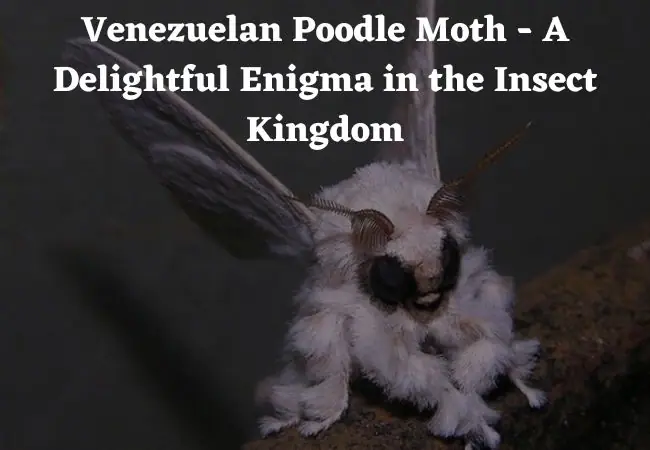Sea Pig: Guardians of the Deep-Sea Ecosystem
The sea pig, scientifically known as Scotoplanes, is a peculiar and intriguing deep-sea creature that belongs to the class Holothuroidea, which includes sea cucumbers. Despite its unattractive appearance, the sea pig has captivated the interest of scientists and marine enthusiasts due to its unique adaptations and behavior.

In this blog post, we will delve deeper into the world of sea pigs, exploring their physical appearance, feeding habits, and unique adaptations. Join us as we uncover this extraordinary marine world and gain a deeper appreciation for the wonders of nature.
All About the’Sea Pig’
Scientific Name and Classification
The scientific name of sea pigs is Scotoplanes. They belong to the phylum Echinodermata, which includes other marine animals such as starfish, sea urchins, and sea cucumbers. Sea pigs are specifically classified in the class Holothuroidea, which comprises sea cucumbers.
The taxonomic classification of sea pigs is as follows:
Kingdom: Animalia Phylum: Echinodermata Class: Holothuroidea Order: Elasipodida Family: Elpidiidae Genus: Scotoplanes
There are several known species within the genus Scotoplanes, including Scotoplanes globosa, Scotoplanes ornatus, and Scotoplanes talpa. Each species may have distinct characteristics and distribution patterns, contributing to the overall diversity within the genus. Further research and taxonomic studies may uncover more about the classification and species diversity within the Scotoplanes genus.
.
Overview
Sea pigs are deep-sea creatures that inhabit the abyssal zones of the world’s oceans. They have distinct physical characteristics, such as a soft, elongated body, tubular feet called podia, and tentacles for feeding. They have evolved to survive in the harsh circumstances of deep water, including high pressure, chilly temperatures, and a lack of food sources.
Feeding on decaying organic matter, sea pigs play a vital role as detritivores in the deep-sea ecosystem. They sift through sediments, capturing particles using their podia and tentacles. They also have a symbiotic relationship with bacteria in their respiratory trees, aiding in digestion and nutrient extraction.
Sea pigs are found in various oceans, near hydrothermal vents, seamounts, and abyssal plains. While their conservation status is unknown, human activities such as deep-sea mining, bottom trawling, climate change, and plastic pollution can indirectly impact their habitat and the delicate deep-sea ecosystem.
Further research is needed to better understand sea pigs and their interactions with other species. Protecting the deep-sea environment through conservation measures, sustainable practices, and increased knowledge will help ensure the preservation of sea pigs and the unique ecosystems they inhabit. We learn important things about the wonders of the uncharted regions of our planet as we go farther into the secrets of the deep water.
.
physical appearance
The sea pig has a distinct and unusual physical appearance, perfectly suited for its deep-sea habitat. Here are some key features of its appearance:
1. Body Shape: Sea pigs have soft, elongated body that is often described as sausage-like or cucumber-shaped. They can grow to be around 10 to 15 centimeters (4 to 6 inches) in length.
2. Skin Texture: The sea pig’s skin is typically smooth and gelatinous, giving it a pliable and flexible texture. The skin color can vary among different species, ranging from pale pink to dark purple or brown.
3. Tubular Feet (Podia): Covering the body of a sea pig are several tubular feet called podia. These podia act as sensory structures and help it to navigate and explore its surroundings. The podia are also used for feeding, as these sea creatures collect organic matter by traversing it across the ocean floor.
4. Tentacles: Sea pigs possess specialized tentacles that extend from their heads. These tentacles are used for feeding and are lined with tiny tube feet that capture particles of organic matter from the water or sediments.
5. Respiration Structures: Sea pigs have unique respiratory trees, which are branched structures located inside their bodies. These trees are filled with bacteria that aid in the breakdown of organic material, and they also play a role in respiration.
While sea pigs may not be conventionally attractive creatures, their peculiar physical characteristics make them fascinating subjects of study and provide them with the means to survive and thrive in the harsh conditions of the deep sea.
.
Habitat and Distribution
Sea pigs inhabit the abyssal zones of the world’s oceans. They are commonly found between 1,000 and 6,000 meters (3,300 and 19,700 feet) below the surface. These depths are known as the hadal zone, where light does not penetrate, and the water pressure is immense.
Sea pigs have a wide distribution and can be found in various oceans around the globe. They are known to inhabit the Atlantic Ocean, Pacific Ocean, and Indian Ocean. Within these regions, they occupy different habitats, including areas near hydrothermal vents, seamounts, and abyssal plains.
Hydrothermal vents are hot springs on the ocean floor that release mineral-rich water, creating unique ecosystems. Sea pigs are often observed near these vents, taking advantage of the organic matter and minerals that are carried by the vent fluids.
Seamounts, which are underwater mountains, also serve as important habitats for sea pigs. These elevated features create localized currents that can transport food particles, providing a source of sustenance for the sea pigs.
Abyssal plains, vast areas of flat seafloor in the deep ocean, are another preferred habitat for sea pigs. Here, they scavenge on organic material that sinks from the surface, such as dead animals and fecal matter, using their specialized feeding structures.
Due to their deep-sea habitat and the challenging conditions associated with extreme depths, studying sea pigs requires specialized equipment and techniques. However, their distribution across different oceans suggests their ability to adapt to a range of environmental conditions, making them intriguing subjects for deep-sea research and exploration.
.
Feeding Habits
Sea pigs are detritivores, meaning they feed on decaying organic matter that sinks from the surface to the deep-sea floor. Their feeding habits are well-suited for the nutrient-poor environment of the abyssal zone. Here are some key aspects of their feeding behavior:
- Sediment-Sifting Feeding: Sea pigs use their specialized feeding structures to sift through the sediments on the seafloor. They have a unique feeding adaptation called “deposit feeding.” Using their tubular feet, known as podia, they create a current that carries sediments into their mouths. This allows them to extract organic particles, such as dead animals, fecal matter, and plant debris, from the sediment.
- Tentacular Feeding: Sea pigs have tentacles that extend from their heads, equipped with tiny tube feet. These tentacles are covered in mucus and help capture organic particles from the water column as well. The tube feet on the tentacles transport the captured particles to the sea pig’s mouth.
- Bacterial Symbiosis: Sea pigs have a unique symbiotic relationship with bacteria. They possess specialized structures called respiratory trees, which are filled with bacteria. These bacteria aid in the breakdown of organic material that the sea pig consumes. In return, the sea pig provides a habitat and a continuous supply of food for the bacteria. This symbiotic relationship enhances the ability of these sea creatures to extract nutrients from the debris they eat.
- Filter-Feeding Adaptations: Sea pigs have adaptations that enhance their filter-feeding capabilities. Their feeding structures, including their tentacles and podia, are equipped with cilia that help trap organic particles and facilitate their transport toward the mouth.
By feeding on decaying organic matter, sea pigs play an important role in the cycling of nutrients in the deep-sea ecosystem. They contribute to the breakdown and recycling of organic material, which supports the overall productivity of the abyssal zone.
.
Adaptations for Deep-Sea Living
Sea pigs have several adaptations that enable them to thrive in the extreme conditions of the deep sea. These adaptations are specialized for life in the abyssal zone, where they encounter low temperatures, high pressure, and scarce food resources. Here are some notable adaptations of sea pigs:
1. Pressure Tolerance: Sea pigs are well-adapted to withstand the high pressures of the deep sea. Their soft and pliable bodies allow them to withstand the crushing forces exerted by the immense water pressure at great depths.
2. Bioluminescence: Many species of sea pigs possess bioluminescent capabilities. Bioluminescence is the ability to produce light through chemical reactions within their bodies. This adaptation is thought to play a role in communication, attracting prey, or possibly even camouflage in the dimly lit deep-sea environment.
3. Feeding Structures: Sea pigs have evolved specialized feeding structures to scavenge for food on the deep-sea floor. Their tubular feet, or podia, are equipped with sensory structures that help them detect and collect organic particles from the sediment. The tentacles extending from their heads are used for capturing particles from the water column.
4. Reduced Metabolism: Sea pigs have adapted to the limited availability of food in the deep sea by reducing their metabolic rates. They can slow down their metabolism to conserve energy and survive for extended periods between feeding opportunities.
5. Reduced Metabolism: Sea pigs have adapted to the limited availability of food in the deep sea by reducing their metabolic rates. They can slow down their metabolism to conserve energy and survive for extended periods between feeding opportunities.
6. Bacterial Symbiosis: Sea pigs have a symbiotic relationship with bacteria. Their respiratory trees house bacteria that aid in the breakdown of organic material. This symbiosis allows sea pigs to extract nutrients more efficiently from the detritus they consume
7. Reproductive Strategies: Sea pigs have adapted reproductive strategies that ensure the survival of their species in the deep sea. Some species release their gametes directly into the water column for external fertilization, while others brood their eggs within their bodies, protecting them until they hatch.
These adaptations of sea pigs allow them to navigate, feed, and reproduce successfully in the challenging conditions of the deep sea. By studying these adaptations, scientists can gain insights into the remarkable ways in which organisms have adapted to survive in extreme environments.

.
Life Cycle and Reproduction
The life cycle and reproduction of sea pigs in the deep sea, are still not fully understood due to the challenges of studying these elusive creatures in their natural habitat. However, some general information about their life cycle and reproduction has been observed and studied.
deep sea pigs employ different reproductive strategies. Some species exhibit external fertilization, where males release sperm into the water column, and females release their eggs simultaneously. Fertilization occurs externally, and the resulting embryos develop in the water.
Some other species of sea pigs exhibit brooding behavior. In these cases, females retain the fertilized eggs within their bodies until they hatch. The female sea pig provides protection and nutrients to the developing embryos until they are ready to be released as fully formed juvenile sea pigs.
After hatching or being released from the female’s body, the juvenile sea pigs undergo a period of growth and development. They gradually mature into adult sea pigs over time, typically reaching reproductive maturity within a few years.
The exact lifespan of sea pigs is not well-documented, but it is believed to be relatively short, possibly ranging from a few years to a decade. The challenging deep-sea environment, with its limited food resources and extreme conditions, likely influences their lifespan.
Due to the remote and inaccessible nature of their habitat, the population dynamics of sea pigs are not well-studied. It is unclear whether they exhibit specific migratory behaviors or have localized populations in certain deep-sea regions.
Further research is needed to gain a more comprehensive understanding of the life cycle and reproductive biology of sea pigs. Obtaining detailed observations and data on their reproductive behaviors and studying individuals throughout their life stages will contribute to unraveling the mysteries of their fascinating life cycle in the deep sea.
.
Interactions with Other Species
Sea pigs interact with various species in their deep-sea environment, although their specific ecological relationships are not extensively documented. Here are some notable interactions that have been observed or hypothesized:
1. Predation
Sea pigs may be preyed upon by larger deep-sea organisms. Some potential predators could include deep-sea fish, cephalopods, and other scavenging organisms. However, due to their relatively inaccessible habitat, direct observations of predation events involving these sea creatures are limited.
2. Scavenging Communities
Sea pigs are part of the deep-sea scavenging community. They consume decomposing organic waste that settles on the ocean floor and helps the ecosystem by breaking down and recycling nutrients. Their feeding activities make them important players in the deep-sea food web.
3. Bacterial Symbiosis
Sea pigs have a symbiotic relationship with bacteria. Inside their respiratory trees, they harbor bacteria that aid in the breakdown of organic material. The bacteria benefit from the constant supply of organic matter provided by these,, while the sea pigs benefit from the enhanced digestion and extraction of nutrients facilitated by the bacteria.
4. Hydrothermal Vent Associations
Some species of sea pigs have been observed in the vicinity of hydrothermal vents. These vents release hot, mineral-rich fluids into the deep-sea environment, creating unique ecosystems. Sea pigs may benefit from the organic matter and minerals carried by the vent fluids, contributing to their presence near these hydrothermal vent systems.
5. Interactions with Other Deep-Sea Organisms
Sea pigs likely have interactions with other deep-sea organisms, such as other scavengers, deep-sea worms, and deposit-feeding species. These interactions may involve competition for food resources or spatial overlap within the abyssal zone.
Understanding the precise nature of interactions between sea pigs and other species in the deep sea requires further research and exploration. Advancements in deep-sea technologies and ongoing studies of deep-sea ecosystems will help uncover more about the intricate relationships between sea pigs and their ecological counterparts.
.
Conservation Status and Human Impact
The conservation status of sea pigs is currently not assessed by any conservation organizations. Due to their deep-sea habitat and limited interactions with human activities, their specific vulnerability and population trends remain largely unknown. However, it is important to consider potential human impacts on the deep-sea ecosystem as a whole, which can indirectly affect sea pigs and their habitat. Here are some key points regarding human impact and conservation considerations:
1. Deep-Sea Mining: The growing interest in deep-sea mining for minerals and resources raises concerns about potential habitat destruction and disruption of deep-sea ecosystems, including areas where sea pigs are found. These sensitive ecosystems and the creatures that live there may be adversely affected by the mining of minerals from the seafloor.
2. Bottom Trawling: Deep-sea bottom trawling, a fishing method that involves dragging nets along the seafloor, can cause significant damage to deep-sea habitats. Although sea pigs may not be direct targets of bottom trawling, they can be affected by the destruction of their habitat and the depletion of food resources.
3. Climate Change: Sea pigs are part of deep-sea ecosystems that might be affected by climate change because of rising ocean temperatures, shifting ocean currents, and changing nutrient cycles. These changes can affect the availability of food and disrupt the delicate balance of the deep-sea environment.
4. Plastic Pollution: Even while the magnitude of plastic pollution in deep water is still being investigated, it is becoming more of an issue. Plastics can accumulate in deep-sea habitats, potentially impacting organisms, including sea pigs, through ingestion or entanglement.
5. Lack of Data and Research: The deep sea remains one of Earth’s least explored and understood areas. The scarcity of data and research on sea pigs and their habitats hinders efforts to assess their conservation status accurately and implement targeted conservation measures.
Given the fragile nature of the deep-sea ecosystem and the potential indirect impacts on sea pigs, it is essential to prioritize conservation efforts, including the establishment of protected areas, sustainable fishing practices, and increased research to better understand and safeguard these unique and vulnerable environments.
.
Sea Pig Facts
- Sea pigs move at a leisurely pace on the seafloor, typically crawling at a rate of a few centimeters per minute.
- Sea pigs have a unique symbiotic relationship with bacteria.
- Some species of sea pigs possess bioluminescent properties.
- Sea pigs play a crucial role as detritivores, contributing to the breakdown and recycling of organic matter on the seafloor.
- Sea pigs can form dense aggregations on the seafloor, with thousands of individuals congregating together.
.
Conclusion
Lastly, sea pigs are fascinating deep-sea creatures with unique adaptations that allow them to thrive in the abyssal zones of the world’s oceans. Their plump bodies, covered in tubular feet called podia, and specialized feeding structures enable them to scavenge for decaying organic matter on the seafloor.
While their physical appearance may be unattractive to some, sea pigs possess remarkable adaptations for deep-sea living. They have evolved to withstand high pressures, exhibit bioluminescence, and engage in symbiotic relationships with bacteria for digestion.
However, the conservation status of sea pigs remains unknown as their specific vulnerability and population trends have not been assessed. Nonetheless, human activities, such as deep-sea mining, bottom trawling, climate change, and plastic pollution, pose potential threats to the fragile deep-sea ecosystem, indirectly impacting sea pig and their habitat.
Further research, conservation efforts, and sustainable management practices are crucial to understanding and protecting sea pigs and the deep-sea environments they inhabit. We can better comprehend the intricate web of life in the deep sea and encourage the protection of these significant and endangered ecosystems by solving the riddles of these unusual organisms.
FAQs:
What is a sea pig?
The sea pig is a peculiar deep-sea creature that belongs to the family of sea cucumbers. Despite its name, it is not a pig at all but rather a marine invertebrate. Resembling a plump, pinkish blob, the sea pig has a soft, gelatinous body and numerous short, tentacle-like appendages on its underside.
How big is a sea pig?
Sea pigs vary in size, but they generally measure around 4 to 6 inches (10 to 15 centimeters) in length and about 2 to 3 inches (5 to 7.5 centimeters) in width. However, some larger individuals have been recorded, reaching up to 10 inches (25 centimeters) in length.
What does a sea pig eat?
Sea pigs are detritivores, which means they primarily feed on organic matter that settles on the seafloor. They consume a variety of food sources, including decaying plant and animal material, fallen carcasses, and fecal matter. Sea pigs use their specialized tube feet to gather and ingest the sediment, sifting through it to extract any organic particles. They also have a specialized mouth called a tentacular crown, which helps them collect food.
What does a sea pig look like?
A sea pig has a distinct appearance that sets it apart from other marine creatures. Although some individuals may seem more orange or purple, it has a soft, gelatinous body that is normally pinkish or reddish in color. Its body is cylindrical and long, with a tapering posterior and rounded anterior end. On the underside of its body, it has numerous short, tentacle-like appendages known as tube feet.
Read Also:
- Spotted Eagle Ray: The Jewel of the Seas
- Sea Butterflies: Discovering the Delicate Wonders of the Ocean
- The Blue Dragon Sea Slug: A Hidden Gem of the Open Ocean

